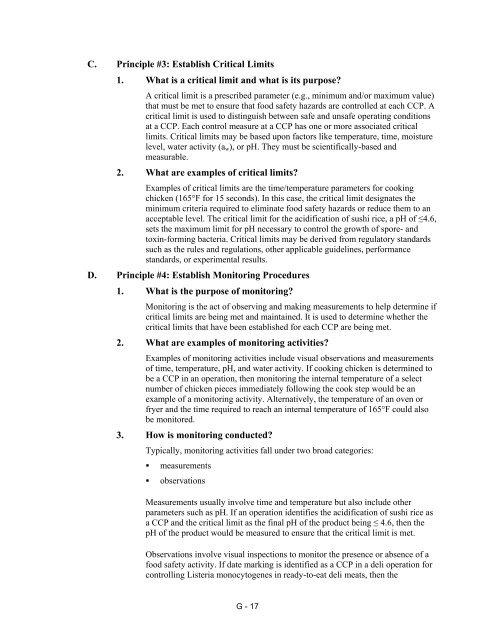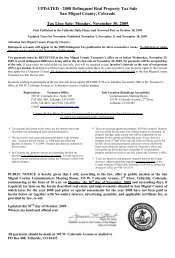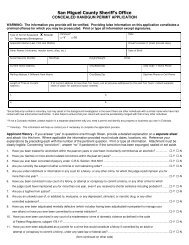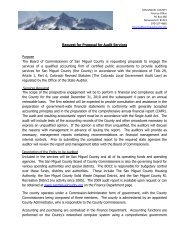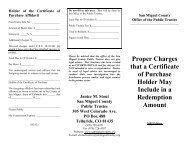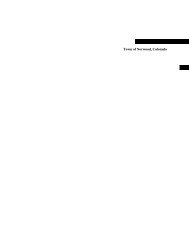colorado retail food establishment rules and ... - Boulder County
colorado retail food establishment rules and ... - Boulder County
colorado retail food establishment rules and ... - Boulder County
Create successful ePaper yourself
Turn your PDF publications into a flip-book with our unique Google optimized e-Paper software.
C. Principle #3: Establish Critical Limits<br />
1. What is a critical limit <strong>and</strong> what is its purpose?<br />
A critical limit is a prescribed parameter (e.g., minimum <strong>and</strong>/or maximum value)<br />
that must be met to ensure that <strong>food</strong> safety hazards are controlled at each CCP. A<br />
critical limit is used to distinguish between safe <strong>and</strong> unsafe operating conditions<br />
at a CCP. Each control measure at a CCP has one or more associated critical<br />
limits. Critical limits may be based upon factors like temperature, time, moisture<br />
level, water activity (a w ), or pH. They must be scientifically-based <strong>and</strong><br />
measurable.<br />
2. What are examples of critical limits?<br />
Examples of critical limits are the time/temperature parameters for cooking<br />
chicken (165°F for 15 seconds). In this case, the critical limit designates the<br />
minimum criteria required to eliminate <strong>food</strong> safety hazards or reduce them to an<br />
acceptable level. The critical limit for the acidification of sushi rice, a pH of ≤4.6,<br />
sets the maximum limit for pH necessary to control the growth of spore- <strong>and</strong><br />
toxin-forming bacteria. Critical limits may be derived from regulatory st<strong>and</strong>ards<br />
such as the <strong>rules</strong> <strong>and</strong> regulations, other applicable guidelines, performance<br />
st<strong>and</strong>ards, or experimental results.<br />
D. Principle #4: Establish Monitoring Procedures<br />
1. What is the purpose of monitoring?<br />
Monitoring is the act of observing <strong>and</strong> making measurements to help determine if<br />
critical limits are being met <strong>and</strong> maintained. It is used to determine whether the<br />
critical limits that have been established for each CCP are being met.<br />
2. What are examples of monitoring activities?<br />
Examples of monitoring activities include visual observations <strong>and</strong> measurements<br />
of time, temperature, pH, <strong>and</strong> water activity. If cooking chicken is determined to<br />
be a CCP in an operation, then monitoring the internal temperature of a select<br />
number of chicken pieces immediately following the cook step would be an<br />
example of a monitoring activity. Alternatively, the temperature of an oven or<br />
fryer <strong>and</strong> the time required to reach an internal temperature of 165°F could also<br />
be monitored.<br />
3. How is monitoring conducted?<br />
Typically, monitoring activities fall under two broad categories:<br />
• measurements<br />
• observations<br />
Measurements usually involve time <strong>and</strong> temperature but also include other<br />
parameters such as pH. If an operation identifies the acidification of sushi rice as<br />
a CCP <strong>and</strong> the critical limit as the final pH of the product being ≤ 4.6, then the<br />
pH of the product would be measured to ensure that the critical limit is met.<br />
Observations involve visual inspections to monitor the presence or absence of a<br />
<strong>food</strong> safety activity. If date marking is identified as a CCP in a deli operation for<br />
controlling Listeria monocytogenes in ready-to-eat deli meats, then the<br />
G - 17


